

How to Take Care of a Dog
Sections

How to Take Care of a Dog: Essential Tips
Taking care of a dog goes beyond providing food and shelter; it’s about ensuring their overall health, happiness, and well-being. From regular exercise and grooming to veterinary care and proper nutrition, a comprehensive care routine is essential for your dog to thrive. This guide will walk you through the fundamentals of how to take care of a dog, covering everything from choosing a vet and administering vaccines to keeping your dog’s teeth clean and ensuring they get the right nutrition.
TRI-ACTA for Pets
A proactive approach for developing and younger adult pets to maintain optimal joint health mobility, minimize inflammation and fend off age-related ailments.

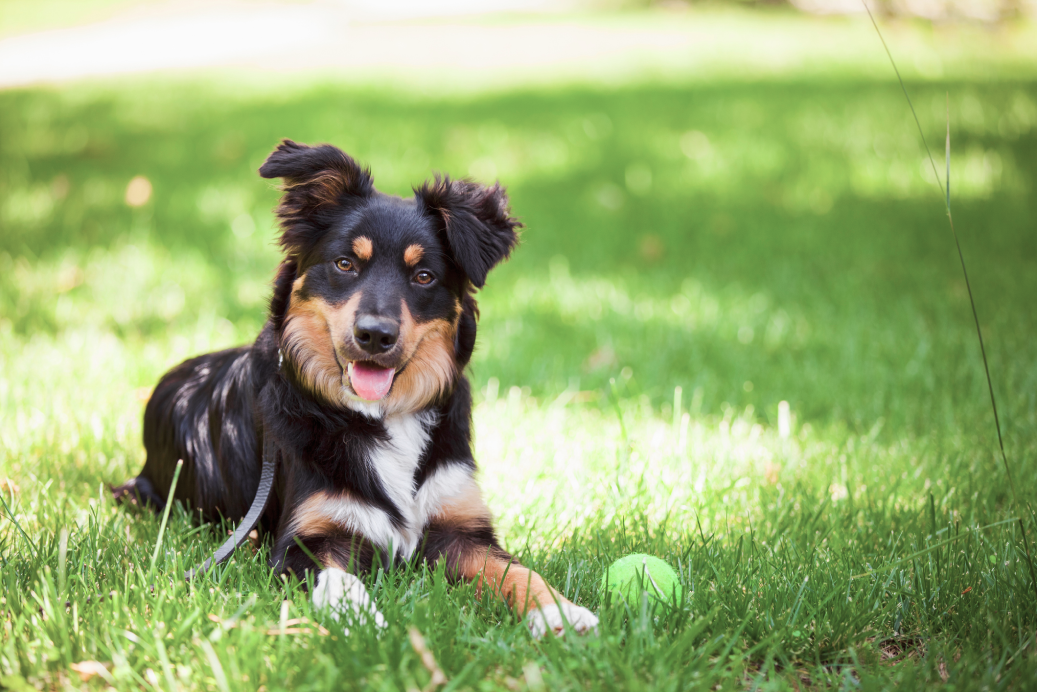
Basics of How to Take Care of a Dog
Caring for a dog involves more than just feeding and providing shelter; it requires a commitment to their overall health and well-being. Here are the essential components of dog care to ensure your furry friend stays happy, healthy, and thriving.
Dog Health Routine Care
A consistent health routine is a vital part of how to take care of a dog. This involves regular exercise, a balanced diet, grooming, and preventive care.
- Exercise: Dogs need regular physical activity to maintain their physical and mental health. The amount and type of exercise depend on the breed, age, and health status of your dog. Activities can range from daily walks and playtime to more intensive exercises like hiking or running. Regular exercise helps prevent obesity, supports cardiovascular health, and reduces behavioral issues by providing an outlet for excess energy.
- Grooming: Regular grooming keeps your dog’s coat clean and free from mats and tangles and helps maintain healthy skin. Grooming routines vary by breed and can include brushing, bathing, nail trimming, ear cleaning, and checking for ticks or fleas. Regular grooming sessions also provide an opportunity to check for signs of health problems such as lumps, skin infections, or ear infections.
- Preventive Care: Routine care also involves administering regular flea, tick, and heartworm prevention treatments. Keeping up with these treatments is crucial to avoid infestations and serious health problems that parasites can cause.
Dog Vet Selection
Choosing the right veterinarian is crucial for your dog’s health care. Your vet will be your partner in keeping your dog healthy and addressing any health concerns.
- Research and Reviews: Start by researching local veterinarians and reading reviews from other pet owners. Look for a vet who is well-reviewed for their expertise, professionalism, and compassion. A good vet should have a strong reputation in your community and positive feedback from their clients.
- Facility Visit: Visit the clinic to assess the cleanliness and facilities available. Ensure that it is equipped with modern medical equipment and has a welcoming environment for both pets and owners. Observing the clinic environment can provide insights into the quality of care your dog will receive.
- Compatibility and Comfort: It's essential to find a vet you feel comfortable communicating with and who takes the time to listen to your concerns about your dog’s health. Your dog should also feel comfortable with the vet; observe how the vet interacts with your pet during the initial visit.
Dog Vaccines
Vaccinations are a vital part of preventive health care for dogs, protecting them against various infectious diseases that can be serious or even fatal.
|
Type of Vaccine |
Explanation |
|
Core Vaccines |
Core vaccines are recommended for all dogs and protect against the most common and dangerous diseases. These typically include rabies, distemper, parvovirus, and adenovirus. Puppies usually start their vaccinations at 6-8 weeks old, with boosters needed at specific intervals throughout their lives. |
|
Non-Core Vaccines |
Non-core vaccines may be recommended based on your dog’s lifestyle, environment, and risk factors. These can include vaccines for Lyme disease, leptospirosis, and Bordetella (kennel cough). Your vet can help determine which additional vaccines are necessary based on your dog's specific needs and living conditions. |
Vaccination Schedule
It’s important to follow the recommended vaccination schedule provided by your vet to ensure your dog is adequately protected. Keeping up with booster shots is essential to maintain immunity over your dog’s lifetime.
Dental Care
Dog dental care is an often-overlooked aspect of caring for your pup, yet it’s crucial for overall health. Poor dental hygiene can lead to serious health issues, including heart disease, liver disease, and kidney disease.
- Regular Teeth Brushing: Ideally, dogs’ teeth should be brushed daily with dog-specific toothpaste (never use human toothpaste as it can be toxic to dogs). Regular brushing helps prevent the build-up of plaque and tartar, which can lead to gum disease and tooth decay.
- Professional Dog Dental Cleanings: In addition to home care, dog dental cleanings performed by a veterinarian are recommended, especially for older dogs or those showing signs of dental disease. These cleanings typically require anesthesia and allow the vet to thoroughly clean above and below the gum line, where bacteria can hide and cause damage.
- Dental Chews and Toys: Providing your pup with the best dental chews for dogs and toys can help reduce plaque and tartar build-up. These products are designed to promote chewing, which naturally cleans teeth and massages gums. However, they should not replace regular brushing or professional dental care.
Dog Nutrition
Dogs require a well-rounded diet that balances essential nutrients, including protein, carbohydrates, and fats, to support overall health, growth, and energy levels.
- Protein is crucial for muscle development and repair
- Carbohydrates provide a primary energy source
- Fats are vital for brain function and maintaining a healthy coat and skin.
Additionally, a good dog diet should include vitamins and minerals to support immune function, bone health, and overall vitality.
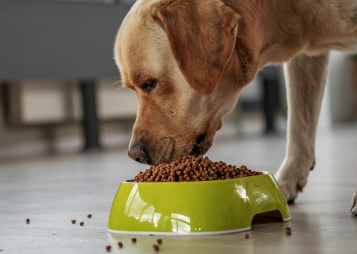
To ensure the dog food you select meets these nutritional needs, look for a Nutritional Adequacy Statement on the packaging. This statement confirms that the food is formulated to provide all the necessary vitamins and minerals for your dog's health. Typically found on the back or sides of the packaging, the statement should contain the words "complete and balanced" and specify which life stage the food is intended for—whether puppy, adult, or senior. Some dog foods are also formulated to be suitable for "all life stages," meaning they meet the nutritional requirements for any age or life stage.
Veterinary medical foods are specialized diets formulated to manage specific health conditions in dogs, such as kidney disease, gastrointestinal disorders, or weight management. These foods may or may not have a Nutritional Adequacy Statement. If the food lacks this statement, it will be labeled with terms like "intermittent or supplemental," indicating that it should not be used as the sole source of nutrition. In such cases, the food is intended to be fed alongside other nutritionally complete foods to ensure your dog receives all the necessary nutrients for their overall health. Always consult your veterinarian when feeding your dog a medical diet to ensure it meets all of your pet's nutritional needs.
Additionally, consider the quality and source of ingredients in your dog’s diet. High-quality animal-based proteins are generally more digestible and provide more essential amino acids than plant-based sources. Look for dog foods with named meat sources (e.g., chicken, beef, or lamb) rather than vague terms like "meat meal" or "animal byproducts." Whole grains, vegetables, and fruits can also provide essential nutrients and fiber, contributing to digestive health.
Remember, a dog's nutritional needs may vary based on age, size, breed, activity level, and health status. Regular check-ups with a veterinarian can help ensure that your dog’s diet remains appropriate and nutritious throughout its life.
Additional Nutritional Considerations
Depending on your dog’s size, breed, and health conditions, you may want to include additional supplements in your dog’s daily diet in addition to their food to further support their health. Considering that as many as 80% of dogs of all breeds are likely to experience some sort of joint issue in their lifetime, a joint supplement formulated for dogs is one of the most important additions to your dog’s diet that you can give starting at an early age.
TRI-ACTA is a premium joint supplement that contains 100% natural ingredients, as listed in the table below:
|
TRI-ACTA Ingredient |
Benefit |
|
Glucosamine HCl and Sulfate |
The sulfur in glucosamine sulfate plays a vital role because sulfur is a key nutrient necessary for healthy joint tissue. Glucosamine HCL, however, is naturally stable and doesn't need sodium chloride for stabilization, making it a somewhat purer form that provides a slightly higher amount of glucosamine to the body. |
|
Chondroitin |
Glucosamine and chondroitin work together to support cartilage repair and help prevent the breakdown of cartilage in your dog's joints. |
|
Methylsulfonylmethane (MSM) |
MSM, a natural anti-inflammatory, helps reduce joint swelling in your dog, which alleviates pain. |
|
Hyaluronic Acid (Available in TRI-ACTA H.A.) |
Thickens the synovial fluid in your dog’s joints, allowing smoother and more efficient movement with less friction. |
It’s important to learn how to read a supplement label properly, as every company lists their ingredients and amounts differently. Plus, most pet supplements contain 50–80% of inactive ingredients (fillers, additives, etc.) so knowing how to identify those with 100% active ingredients is important for your dog’s health and your dollar.
Essential Dog Products
When it comes to keeping your dog happy, healthy, and comfortable, having the right products is key. From grooming essentials to accessories that support mobility, here are some of the most important dog products every owner should consider.
Dog Grooming Products
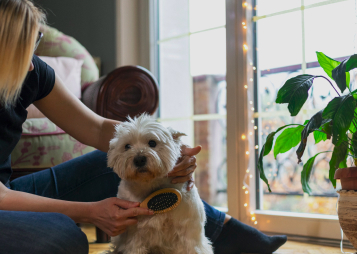
Regular grooming is crucial for your dog’s overall health, keeping their coat shiny, their skin healthy, and preventing matting or tangles (especially in long-haired dogs). Here are the essential you should keep in your cupboard: dog grooming products
- Brushes and Combs: Depending on your dog’s coat type, you may need a slicker brush for long-haired breeds or a bristle brush for short-haired dogs. A good comb helps remove tangles and keeps the fur neat.
- Shampoo and Conditioner: Choose a dog-specific shampoo that’s gentle on your pet’s skin. Hypoallergenic and oatmeal-based formulas are great for sensitive skin, while some shampoos offer flea and tick protection.
- Nail Clippers: Regular nail trimming is important for preventing overgrown nails, which can cause discomfort or even injury. Make sure to choose dog-specific nail clippers or grinders for safe and effective trimming.
- Ear Cleaner: To prevent ear infections, regular cleaning with a vet-recommended ear cleaner can remove wax and dirt buildup.
Dog Enrichment
Enriching your dog’s life is about providing them with the mental, physical, and social stimulation they need to thrive. While toys and exercise are important, there are additional ways to ensure your dog is happy, well-adjusted, and well-behaved. Two great options are dog socialization classes and dog day care, both of which offer valuable benefits.
Dog Socialization Classes
Dog socialization classes provide a structured environment where your dog can learn to interact with other dogs and humans in a positive and controlled setting. These classes are typically guided by professional trainers who focus on teaching dogs how to behave appropriately in different social situations. Here's why socialization classes can be beneficial:
- Controlled Environment: Trainers help manage interactions to ensure they are safe and productive, making it easier for shy or anxious dogs to build confidence.
- Learning Social Cues: Dogs learn how to communicate with other dogs, understanding when to play, when to stop, and how to read body language to avoid conflicts.
- Reducing Fear or Aggression: Dogs that haven't been socialized can become fearful or aggressive in new situations. Socialization classes help reduce these behaviors by gradually exposing dogs to different stimuli.
Dog Day Care
Dog day care is another excellent option for providing your dog with regular social interaction, mental stimulation, and exercise. At a dog day care facility, dogs have the opportunity to play with other dogs under supervision, keeping them engaged and active during the day.
- Physical Exercise: Most day care centers offer plenty of playtime, ensuring that your dog gets the physical activity they need to burn off energy and stay fit.
- Mental Stimulation: Many dog day cares offer structured activities, puzzles, and games to keep your dog mentally stimulated, preventing boredom and destructive behaviors.
- Socialization in a Fun Environment: Day care gives dogs the chance to meet and play with a variety of other dogs, which can help improve their social skills and prevent loneliness.
Why Is Socialization Important for?
Another integral step in how to take care of a dog is proper socialization. This is critical for dogs to develop into well-behaved, confident, and friendly companions. Here's why it matters:
- Promotes Better Behaviour: Dogs that are well-socialized tend to be calmer and better behaved in public settings. They're less likely to react negatively to new people, animals, or environments.
- Reduces Anxiety: Exposing your dog to a variety of experiences early on helps reduce anxiety and fear of the unknown. Socialized dogs are generally more adaptable and less stressed in new situations.
- Prevents Aggression: Without proper socialization, dogs can become fearful or aggressive toward other dogs and people. Early and ongoing socialization teaches them how to interact appropriately, reducing the risk of aggression.
- Improves Confidence: Just like humans, dogs can build confidence through positive social interactions. Socialization helps shy dogs become more outgoing and gives anxious dogs a safe space to explore new experiences.
Enriching your dog’s life with socialization classes, day care, and positive interactions will help them become well-rounded, happy, and confident companions.
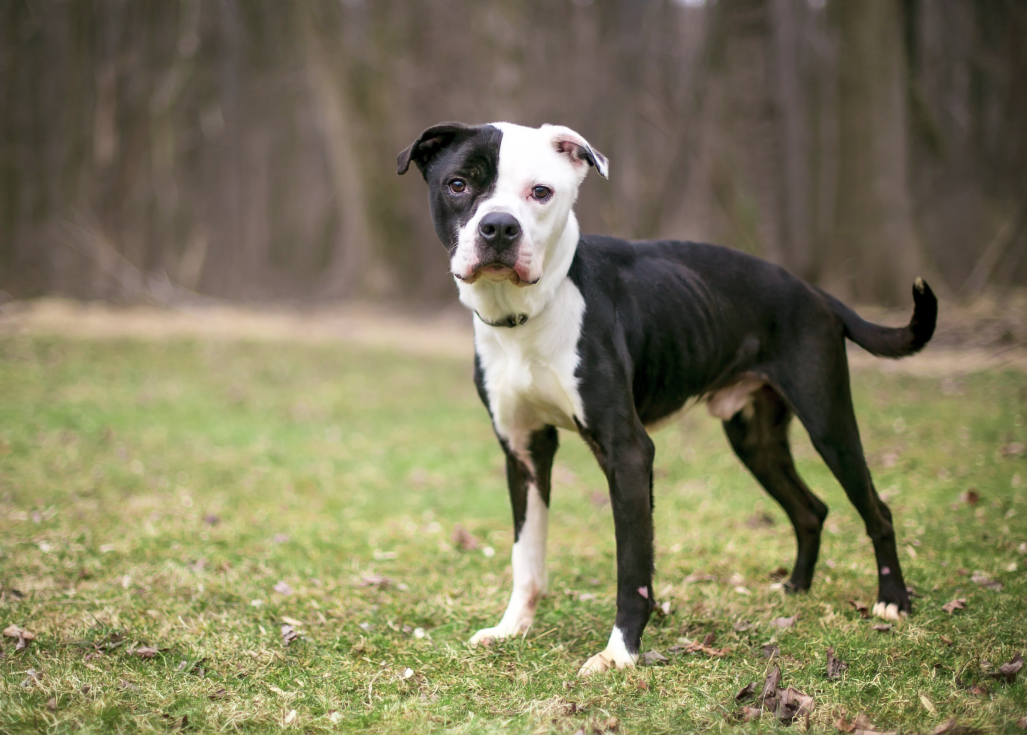
Dog Anatomy 101
When it comes to understanding our furry friends, knowing the basics of dog anatomy can help us better appreciate their movements, health, and unique needs. Let’s dive into the fundamental aspects of a dog’s body, focusing on their muscles, legs, and bones.
Dog Muscle
A dog’s muscular system is designed for movement, strength, and endurance. The muscles in a dog’s body are categorized into three main types: skeletal, smooth, and cardiac.
Skeletal Muscles
These are the most common muscle type in dogs, attached to bones by tendons and controlled voluntarily. Skeletal muscles are responsible for a dog’s movements, such as running, jumping, and fetching. Key skeletal muscles include the deltoids, which control shoulder movement; the gluteals, which are vital for powerful rear-end propulsion; and the biceps and triceps, which are crucial for the movement of the forelimbs.
Smooth Muscles
Found within the walls of internal organs like the stomach, intestines, and blood vessels, smooth muscles are involuntary, meaning they operate without conscious control. These muscles are essential for the functioning of a dog’s digestive system, helping to move food through the intestines, and for regulating blood flow by controlling the diameter of blood vessels.
Cardiac Muscle
This muscle type is exclusive to the heart. The cardiac muscle works tirelessly throughout a dog’s life, pumping blood throughout the body and delivering oxygen and nutrients to tissues while removing waste products. Unlike skeletal muscles, cardiac muscle contractions are involuntary and rhythmic, essential for maintaining a dog’s overall health and vitality.

Dog Legs
A dog’s legs are marvels of engineering, providing support, mobility, and the ability to perform various activities ranging from walking and running to jumping and digging. Each leg is comprised of several key components:
Forelimbs (Front Legs)
The front legs of a dog include the scapula (shoulder blade), humerus (upper arm bone), radius and ulna (forearm bones), and the carpus (wrist). Dogs use their forelimbs not only for walking but also for climbing, digging, and balance. The forelimbs are crucial for absorbing impact during activities like jumping and running. The shoulder joints in dogs are more flexible compared to humans, allowing for a greater range of motion. This flexibility is vital for their agility and ability to make quick turns and leaps.
.png?width=798&height=492&name=Forelimbs%20(Front%20Legs).png)
Hindlimbs (Back Legs)
The hind legs provide the powerhouse for most of a dog’s locomotion. They include the pelvis, femur (thigh bone), tibia and fibula (lower leg bones), and tarsus (ankle). The muscles in the hindquarters, such as the quadriceps and hamstrings, are incredibly strong and are designed for power and propulsion. The knee joint (stifle) is a complex hinge joint that provides stability and shock absorption, especially during running and jumping.
.png?width=790&height=484&name=Hindlimbs%20(Back%20Legs).png)
Dog Paw Anatomy
A dog’s paws are made up of the metacarpals (front paws) or metatarsals (back paws) and phalanges (toes). The paw pads are thick, cushioned areas that protect the bones and joints from shock while providing traction on different surfaces. Dogs also have claws that help with digging and gripping surfaces, and some breeds have dewclaws, which are vestigial digits located slightly higher on the leg.

Dog Bones
A dog’s skeletal system provides the framework that supports the body, protects vital organs, and works in conjunction with muscles to facilitate movement. Understanding the basic structure of a dog’s bones is essential for recognizing how they move and stay healthy.
Skull
The skull is the bony structure that houses and protects the brain, eyes, ears, and other sensory organs. It also forms the jaw, which is essential for chewing food, barking, and playing. Dogs have a diverse range of skull shapes, from the elongated skulls of Greyhounds to the flat, broad skulls of Bulldogs, each adapted to different functions and characteristics. Some dogs, like pugs and bulldogs, have have skull bones that are shortened in length, giving the face and nose a pushed-in appearance. This is called brachycephalic, and can lead to conditions such as reverse sneeze.
Spine
The vertebral column, or spine, consists of multiple vertebrae that protect the spinal cord, a critical part of the central nervous system. The spine supports a dog’s body structure and provides flexibility and movement. It is divided into several regions: cervical (neck), thoracic (upper back), lumbar (lower back), sacral (pelvic area), and coccygeal (tail). The flexibility of the spine allows dogs to be agile and fast, especially in breeds designed for hunting or herding.
Ribcage
The ribcage is made up of ribs and the sternum (breastbone), forming a protective cage around the heart and lungs. The ribcage also plays a role in respiration, expanding and contracting as the dog breathes. The shape and size of the ribcage can vary significantly between breeds, influencing their endurance and respiratory efficiency.
Limbs and Joints
The bones of the limbs are designed for both support and mobility. Joints, where two bones meet, are crucial for flexibility and movement. Common joint types in dogs include hinge joints (like the elbow), ball-and-socket joints (like the hip), and gliding joints (like those in the vertebrae). Joint health is vital for a dog’s mobility, and conditions such as arthritis can significantly impact their quality of life.


Understanding a Healthy Dog Diet
If you walk along any dog food aisle at a pet store, you’ll likely be overwhelmed with choices. Each option seems great with the claims listed on the packages, so how can you be sure you’re making a great decision for your dog? Knowing a couple of key things about how dog food is formulated and what your dog needs in their diet definitely helps.
Knowing How to Read a Dog Food Label: Meats, Meat Byproducts, and Meals
One of the most important parts of how to take care of a dog is choosing the right food. But pet food ingredient lists can be confusing, especially since each brand organizes them differently. However, it's important to know that pet food ingredients are always listed in order of quantity, from most to least.
For example, if beef is the first ingredient, it’s a primary component of the food. After beef, you might see ingredients like water, broth, or meat byproducts or meals. But what exactly does it mean when pet food lists meat byproducts or meals? Are these still considered meat? Yes, but just in a different form. The table below explains what each means:
|
Dog Food Ingredient Name |
Meaning |
|
Meat or Poultry |
Refers to the muscle tissue of the animal, which can include fatty tissues and parts like sinew and gristle. |
|
Meat or Poultry Byproducts |
These are made from organs, fatty tissues, and bones, excluding parts like hair, fur, teeth, or hooves. For poultry, this can also include feet or heads. |
|
Meals |
Composed of various parts such as blood, hair, fur, hooves, horns, and skin or hide. |
|
Byproduct Meals |
Considered the lowest grade of "meat" or “poultry” products, potentially containing stomach contents, feathers, and even manure. |
Wet vs. Dry Dog Food
Dog food comes in two main types: wet or dry. Both of these are perfectly fine to feed your dog. Some dog owners feed their dog exclusively wet or dry food, and some give their dog both. Either option is fine, as long as the food has a statement of nutritional adequacy (as discussed earlier in this article) if your choice of food is all you’re feeding your dog as their main diet.
With that being said, some dog owners prefer dry food because it’s more convenient to feed and easy to store, with a longer shelf-life compared to wet food. On the other hand, some owners prefer wet food because it has a higher moisture content (giving your pup extra water in their diet can help with urinary and kidney health).
Here is a comparison of wet and dry dog food:
|
Aspect |
Wet Dog Food |
Dry Dog Food |
|
Moisture Content |
High moisture content (about |
Low moisture content (about 10-12%). |
|
Shelf Life |
Shorter shelf life once opened; must be refrigerated. |
Longer shelf life, does not need refrigeration. |
|
Texture |
Soft, easier to chew (may be better for senior dogs or dogs with dental issues). |
Crunchy, helps clean teeth. |
|
Portion Control |
More difficult to measure accurately. |
Easier to measure exact portions. |
|
Caloric Density |
Lower calorie per volume due to high water content. |
Higher calorie per volume, more nutrient-dense. |
|
Cost |
Typically more expensive per serving. |
Generally more cost-effective per serving. |
|
Palatability |
More appealing to picky eaters. |
Less palatable for picky eaters but widely accepted. |
|
Dental Health |
Does not help with dental health. |
Can help scrape and clean teeth while chewing. |
|
Storage |
Requires refrigeration after opening. |
Easy to store and does not spoil easily. |
|
Convenience |
Messier, requires cleanup. |
Easy to serve, minimal cleanup required. |
Types of Dog Food
Sometimes you have to feed your dog a specific type of food aside from the first canned or dry food option that you get at the pet store. This could be because they have a health condition that their food can help address, or simply because the food matches your and your dog’s preferences, like with raw dog food, for instance.
The table below summarizes different types of dog food that we’ll discuss in more detail in this section:
|
Type of Dog Food |
Description |
Best For |
|
Raw Dog Food |
Consists of raw meats, bones, and sometimes fruits and vegetables. |
Dogs with high energy needs, or for owners who prefer natural diets. |
|
Diet Dog Food |
Low-calorie food designed for weight management. |
Overweight dogs or those prone to obesity. |
|
Bland Dog Food |
Simple ingredients like boiled chicken and rice, with no seasoning. |
Dogs with digestive issues or recovering from illness. |
|
Often contains whole grains, meat or fish, fruits, and vegetables. |
Dogs with digestive issues, dogs who need additional probiotics in their diet. |
|
|
Dog Food for Kidney Health |
Low in protein and phosphorus, designed to reduce kidney workload. |
Dogs diagnosed with kidney disease or early-stage renal failure. |
|
Anti-Inflammatory Dog Food |
Includes ingredients like omega-3 fatty acids and antioxidants to reduce inflammation. |
Dogs suffering from arthritis, allergies, or chronic inflammation. |
|
Dog Food for Joint Health |
Contains glucosamine for dogs, chondroitin, and omega-3 fatty acids to support joint health. |
Dogs prone to arthritis or joint issues, especially older or large breeds. |
Raw Dog Food for Beginners
As health-consciousness grows, many dog owners are paying closer attention to their pet's diet, avoiding chemicals and fillers found in commercial foods. Raw diets for dogs are gaining popularity due to concerns over pet food recalls, questionable ingredients, and personal preferences. Convenient options like freeze-dried or dehydrated raw food make feeding easier. However, ensuring proper nutrition in a raw diet can be challenging. Diet plans like the BARF diet offer guidance, but it's best to consult with a vet to ensure your dog receives balanced nutrition.
Feeding a Dog a Bland Diet
A bland diet is often recommended for dogs with digestive issues like diarrhea or vomiting, as it soothes the gut and aids recovery. It's also useful for dogs with a poor appetite due to illness. A typical bland diet for dogs includes:
- Boiled skinless, boneless chicken or turkey
- Plain white rice or mashed potatoes (no butter, salt, or seasoning)
This diet helps with:
- Diarrhea: Firms stools and reduces inflammation
- Vomiting: Eases digestion and lowers the chance of further vomiting
- Post-surgery: Provides gentle, easy-to-digest nutrition
- Pancreatitis or Gastroenteritis: Prevents triggering inflammation
To prepare:
- Boil the meat.
- Cook the rice or plain mashed potatoes.
- Mix equal parts meat and starch.
Start with small portions (1-2 tablespoons), gradually increasing as tolerated, and feed frequent smaller meals (5-6 times daily) for better digestion.
Transitioning Back to Regular Food
After 2-3 days of bland diet feeding, if your dog’s symptoms improve, slowly reintroduce their regular food by mixing small amounts into the bland diet. Gradually increase the amount of regular food over several days.
When to Consult a Vet
If your dog’s symptoms persist for more than 24-48 hours, or if your dog refuses to eat, shows signs of lethargy, or is in pain, consult your veterinarian. A bland diet is not a long-term solution and is meant for temporary use until the dog’s digestive health improves.
Dog Supplements and Toppers
Depending on what you are feeding your dog on a daily basis (such as a bland diet or raw diet) you may need to incorporate supplements to ensure that your dog is getting the nutrients they need. Considering that dogs are susceptible to joint degradation, especially as they age, feeding a daily joint supplement is also important and something that many dog owners add to their dog’s meals, regardless of their daily diet.
- The combination of glucosamine and chondroitin for dogs as a daily supplement helps ensure that your dog’s joint health is maintained throughout their life. These two ingredients work together to give your dog enhanced cartilage repair and regeneration, and better joint lubrication for easier movement. TRI-ACTA comes in a flavourless powder, which is easy to sprinkle (simply use the included scoop) on top of your dog’s regular food, dry or wet.
- If your dog has digestive issues, probiotics are a great way to get their gut flora back in balance. Probiotic dog supplements should only be used sparingly though, as too much of a good thing can actually negatively affect your dog’s gut rather than help it (probiotics in the gut is a balance, too much or not enough are equally negative). Make sure you’re following the dosage directions on the package. Natural probiotics like fruits, vegetables, and whole grains are great for your dog’s daily diet, and can usually be found in natural or organic dog foods and treats.
- Bone broth has been made by humans for thousands of years due to its health benefits and delicious taste. Bone broth for dogs (same recipe as for humans, just without seasonings) can help improve your pup’s digestive health, joint health, and more. However, it shouldn’t be relied on as a singular treatment method. TRI-ACTA actually helps rebuild cartilage and provide enhanced lubrication for joints, as well as natural anti-inflammatory benefits to help soothe pain. It can also be used in conjunction with bone broth for dogs.
- Fish oil for dogs is another supplement that has gained popularity because of its potential benefits, which include cost health, heart health, a boost to your dog’s immune system, joint health, and improved brain development in puppies. Although fish oil has been shown to provide some relief for joint pain, it doesn’t treat the underlying issue behind it like a joint supplement would.
- CBD oil for dogs is another avenue that you can take either in conjunction with NSAIDs (non-steroidal anti-inflammatory drugs) or independently to help with your dog’s joint pain caused by conditions like arthritis. Like fish oil and bone broth, CBD oil for dogs doesn’t treat the underlying issue behind your dog’s pain, so you should still give your dog a daily joint supplement.
Types of Dog Treats
When it comes to treating your dog, there are plenty of options, each with its unique benefits. Understanding the different types of dog treats can help you choose the best ones for your furry friend.
Organic Dog Treats
With dog owners becoming more educated about what they are giving their dogs, organic dog treats have become more popular.

Typically, organic dog treats are made from ingredients that are grown without the use of pesticides, chemicals, or synthetic fertilizers. These treats are an excellent choice for pet owners looking for a healthier and more natural option for their dogs. But don’t rely on the “organic” label on the packaging alone; some dog treats that follow these criteria can also be labelled as natural. In any case, the packaging should state that no artificial ingredients are used in the manufacturing of the treat (including fillers, additives, and flavours).
Healthy Dog Treats
Ensuring your dog’s health is in mind when giving them treats is an important part of how to take care of a dog.

Healthy dog treats are formulated with nutrition in mind, focusing on ingredients that provide added health benefits to your dog’s diet. These treats often contain lean proteins, whole grains, and superfoods like blueberries, flaxseed, or spinach. Healthy treats can help support your dog’s overall well-being by providing essential vitamins, minerals, and antioxidants. Many healthy dog treats are also lower in fat and calories, making them a great option for dogs who need to maintain a healthy weight or have specific dietary needs.
Care for an Obese Dog
An essential consideration in how to take care of a dog is knowing what to do if they become obese. Dogs with excessive weight require special attention to their diet, exercise, and overall health. Obesity in dogs can lead to serious health risks, and it’s important to address the issue early to ensure a long, healthy life for your pet.
Some of the common health risks associated with obesity in dogs include:
- Joint and Mobility Issues: Extra weight puts added strain on a dog’s joints, which can lead to arthritis or exacerbate existing joint problems, making movement painful. Giving your dog a joint supplement such as TRI-ACTA H.A., which has hyaluronic acid for increased joint lubrication, is a great way to give them enhanced joint support while you help them lose weight.
- Heart Disease: Obesity increases the risk of heart disease as the heart has to work harder to pump blood through the body.
- Diabetes: Overweight dogs are more likely to develop diabetes due to the increased demand on the body to regulate blood sugar.
- Respiratory Problems: Excess weight can make breathing more difficult, especially in dogs with short muzzles like pugs and bulldogs.
- Shortened Lifespan: Obese dogs often have a reduced life expectancy due to the numerous health complications that can arise.
How to Put a Fat Dog on a Diet
Helping your dog lose weight requires a structured and consistent approach, focusing on both diet and activity. There’s no reason why you and your pup can’t have fun while shedding the pounds! Here are some steps you can take to make the process easier and more effective:
- Consult Your Veterinarian: Before making any changes to your dog’s diet, it’s important to consult a veterinarian. They can assess your dog’s weight and overall health, and recommend a weight loss plan tailored to their needs. They may also rule out any underlying conditions that could be contributing to the weight gain.
- Measure Food Portions: One of the key steps to weight loss in dogs is controlling portion sizes. Measure your dog’s food accurately to avoid overfeeding. Stick to a feeding schedule and avoid free-feeding (leaving food out all day).
Switch to Low-Calorie or Diet Dog Food: Diet dog foods are formulated to be lower in calories while still providing the nutrients your dog needs. Look for foods high in protein and fiber, as they can help your dog feel fuller while consuming fewer calories. - Cut Back on Treats: Treats are often high in calories and can contribute to weight gain. Limit treats and consider switching to healthier, low-calorie alternatives like carrots or green beans. Use treats for training or special occasions, rather than an everyday reward.
- Increase Exercise: Regular physical activity is essential for weight loss. Start with short, gentle walks and gradually increase the length and intensity as your dog becomes more fit. Playtime with toys, fetch, or swimming are also great ways to get your dog moving.
- Monitor Progress: Track your dog’s weight regularly to see if the diet and exercise plan is working. Slow, steady weight loss is the goal, typically around 1-2% of body weight per week. Adjust the plan as needed, in consultation with your vet.
TRI-ACTA for Pets
A proactive approach for developing and younger adult pets to maintain optimal joint health mobility, minimize inflammation and fend off age-related ailments.

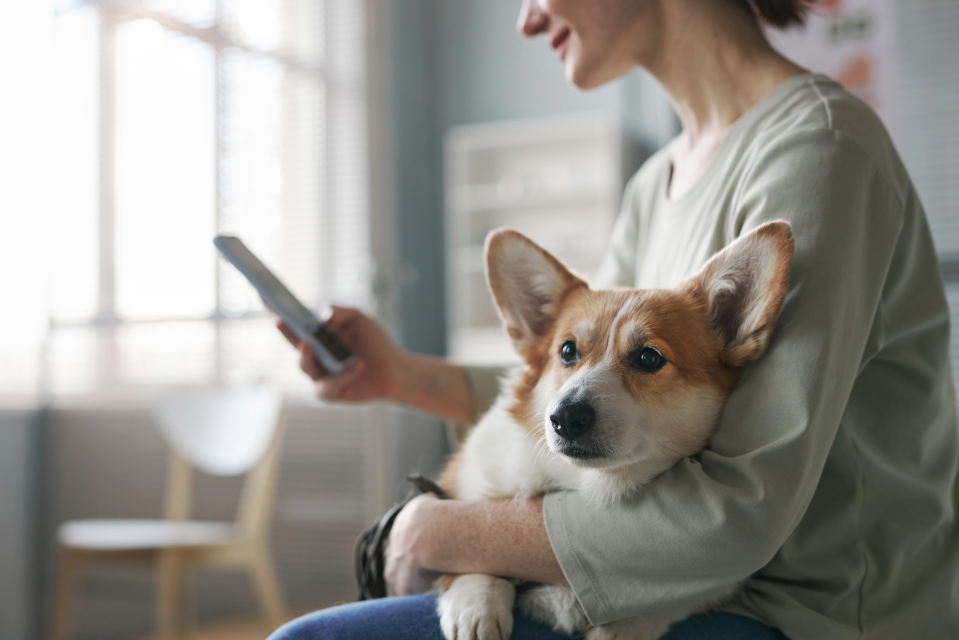
Dog Health Issues: Common Dog Diseases and Symptoms
Understanding common dog diseases and their symptoms can help you detect potential health problems early, and is an essential part of how to take care of a dog. Here's an overview of some of the most prevalent health issues in dogs, their symptoms, and treatment options.
Lyme Disease in Dogs

Lyme disease in dogs is caused by the Borrelia burgdorferi bacteria, transmitted through the bite of infected ticks—most commonly the black-legged or deer tick. Ticks become infected by feeding on animals like mice or deer, and they can pass the bacteria to dogs through their bites. This disease can cause serious health issues in dogs if not diagnosed and treated early.
Specifically, lyme disease can cause the following symptoms:
- Lethargy
- Lameness
- Joint swelling
- Fever (normal dog body temperature is 101 to 102 Faranheit (38 to 39 degrees celsius), so anything above that is a fever)
- Loss of appetite
- Increased urination
- Kidney problems (increased or significantly reduced urination, fluid retention)
How to Check a Dog for Ticks
Here’s a step-by-step guide on how to properly check your dog for ticks.
1. Prepare for the Check
- Use good lighting: Make sure you’re in a well-lit area so you can clearly see any small ticks.
- Gather tools: You may need gloves and tweezers or a tick removal tool if you find any ticks.
2. Feel for Bumps Run your hands slowly over your dog’s entire body, feeling for any small bumps or irregularities. Ticks can be as small as a pinhead or as large as a pea, depending on how long they’ve been attached. Pay close attention to areas where ticks tend to hide:
- Head, ears, and neck: Ticks love warm, hidden places, so check inside and around the ears, under the chin, and on the neck.
- Between the toes: Spread your dog’s toes and check for ticks hiding between them.
- Armpits and groin area: These areas are less exposed and provide a cozy spot for ticks to attach.
- Tail and under the collar: Don’t forget to check around the tail and under any collars or harnesses.
3. Inspect Visually After you’ve checked by touch, visually inspect your dog’s fur and skin. Part the fur carefully to look at the skin beneath, especially in areas where you felt bumps or where ticks commonly hide.
4. Remove Ticks Safely If you find a tick:
- Use tweezers or a tick removal tool: Grasp the tick as close to your dog’s skin as possible. Pull it out slowly and steadily, making sure to remove the entire tick, including the head.
- Clean the area: After removal, clean the bite area with antiseptic and wash your hands.
- Dispose of the tick: Place the tick in rubbing alcohol or a sealed plastic bag before discarding it.
5. Watch for Symptoms After removing a tick, keep an eye on your dog for any signs of illness such as lethargy, loss of appetite, or lameness, which could indicate tick-borne diseases like Lyme disease.
Treatment for a Dog with Lyme Disease
If your dog has been diagnosed with Lyme disease, timely treatment is essential to reduce symptoms and prevent complications. Here's a breakdown of the common treatment approach:
1. Antibiotics
- Doxycycline is the most commonly prescribed antibiotic for Lyme disease in dogs. Treatment usually lasts 4 weeks, but in some cases, longer courses may be required.
- Other antibiotics, such as amoxicillin or ceftriaxone, can also be used based on the dog's condition or if they have sensitivities to doxycycline.
2. Anti-Inflammatory Medications
- To alleviate pain and inflammation in the joints caused by Lyme disease, non-steroidal anti-inflammatory drugs (NSAIDs) may be prescribed. These medications help reduce swelling and improve mobility.
- Always consult your vet before giving any pain relievers, as human medications can be harmful to dogs.
3. Supportive Care
- Hydration and rest are key during the recovery period. Ensure your dog has plenty of water and a quiet space to rest.
- For severe cases, dogs may need to be hospitalized for intravenous fluids or more intensive care.
4. Monitor for Long-Term Symptoms
Even after treatment, some dogs may experience recurring symptoms or long-term effects like kidney issues. Regular follow-ups with your vet are essential for managing Lyme disease in the long run. If any new symptoms arise, such as decreased appetite or increased thirst, consult your vet immediately.
5. Preventive Measures
Once your dog has been treated, it's important to prevent future tick infestations. This includes:
- Using tick preventatives such as topical treatments, collars, or oral medications.
- Regularly checking your dog for ticks after outdoor activities.
Heartworm Disease

Heartworm disease in dogs is a serious and potentially fatal condition caused by Dirofilaria immitis, a parasitic worm spread through mosquito bites. Once transmitted, the larvae grow into adult heartworms that reside in the heart, lungs, and surrounding blood vessels, causing severe lung disease, heart failure, and damage to other organs.
How Dogs Get Infected:
- Mosquitoes act as carriers for heartworms. When an infected mosquito bites a dog, it transmits immature heartworm larvae, which migrate through the dog’s bloodstream and develop into adults.
- Over time, these worms grow and reproduce, with mature heartworms measuring up to 12 inches long.
Symptoms of Heartworm Disease:
Early stages may show no symptoms at all, but as the disease progresses, signs can include:
- Persistent cough
- Fatigue after moderate activity
- Loss of appetite and weight loss
- Difficulty breathing
- In advanced cases, heart failure and fluid buildup in the abdomen
Treatment Options for Heartworm Disease
Treating heartworm disease is a multi-step process that requires veterinary supervision and can take several months.
1. Confirming the Diagnosis
- Before starting treatment, veterinarians will run tests, including a blood test to detect the presence of heartworm antigens and an X-ray or ultrasound to assess the extent of the disease.
2. Stabilization
- Dogs with severe symptoms may need to be stabilized before starting heartworm treatment. This can include medication to reduce inflammation, heart support, and hospitalization in critical cases.
3. Treatment Protocol
- Adulticide Therapy: The primary treatment for heartworm disease is melarsomine, an arsenic-based drug that kills adult heartworms. It’s usually administered as a series of injections over several months. Strict rest is required during this time to avoid complications from dying worms blocking blood vessels.
- Preventing Further Infection: Dogs will be started on heartworm preventatives to kill immature larvae (microfilariae) circulating in the bloodstream. Preventatives stop new heartworms from developing during treatment.
4. Post-Treatment Care
- After the initial treatment, dogs need several weeks of rest to reduce the risk of complications, such as pulmonary embolism (a blockage in the lungs from dead heartworms).
- Follow-up tests will ensure that all heartworms have been eliminated.
5. Preventive Measures
- Heartworm disease is easily preventable with monthly oral, topical, or injectable heartworm preventatives. These medications kill larvae before they mature into adult heartworms.
Dog Kennel Cough

Kennel cough, also known as canine infectious tracheobronchitis, is a highly contagious respiratory infection in dogs. It’s caused by a combination of viruses and bacteria, with the most common culprits being the bacterium Bordetella bronchiseptica and viruses like canine parainfluenza. The disease spreads easily in environments where dogs are in close quarters, such as kennels, dog parks, or grooming facilities, hence the name "kennel cough."
Symptoms of Kennel Cough:
- A dry, honking cough (the most distinctive symptom)
- Gagging or retching after coughing
- Nasal discharge
- Mild fever
- Lethargy
- Loss of appetite, although most dogs maintain their appetite and activity levels
While it often resembles a common cold, kennel cough can become more serious, especially in puppies, older dogs, or dogs with compromised immune systems.
Treatment Options for Kennel Cough
The severity of kennel cough varies, and treatment depends on the dog’s symptoms and health.
1. Rest and Monitoring
- In mild cases, dogs often recover on their own with plenty of rest. Monitor your dog to ensure the cough doesn’t worsen or develop into more severe symptoms.
- Limit exposure to other dogs to prevent the spread of infection.
2. Cough Suppressants
- Cough suppressants or antitussives can be prescribed to ease the irritation caused by persistent coughing. These help make the dog more comfortable, especially if the cough is disrupting sleep.
3. Antibiotics
- If the infection is caused by Bordetella bronchiseptica, antibiotics like doxycycline or amoxicillin may be prescribed to target the bacterial infection.
- Antibiotics are not effective for viral infections, but they may be used if a secondary bacterial infection is suspected.
4. Anti-inflammatory Medication
- In cases where the dog is experiencing throat irritation or inflammation, non-steroidal anti-inflammatory drugs (NSAIDs) may be prescribed to reduce swelling and discomfort.
5. Severe Cases
- In dogs with more severe symptoms, such as difficulty breathing, lethargy, or lack of appetite, hospitalization may be required. In these cases, supportive care like oxygen therapy or IV fluids may be provided.
Prevention
- Vaccination: There are vaccines available that protect against some of the agents that cause kennel cough, including Bordetella bronchiseptica and canine parainfluenza. Vaccination doesn’t completely prevent kennel cough but can reduce the severity of symptoms.
- Isolation: If your dog has been diagnosed with kennel cough, it’s important to isolate them from other dogs to prevent spreading the infection.
With the right care, most dogs recover from kennel cough within 2–3 weeks, but early intervention and monitoring are key to ensuring a smooth recovery.
Summary of Other Common Dog Health Conditions
|
Disease/Condition |
Description |
Treatment Options |
|
Dog Skin Infections & Hot Spots |
Skin infections caused by bacteria, yeast, or fungus; hot spots are inflamed, moist areas of irritated skin. |
Antibiotics or antifungal medications, topical creams, shampoos, keeping the area clean and dry, using an Elizabethan collar to prevent licking. |
|
Dog Stress & Anxiety |
Emotional stress resulting in fear, aggression, or nervousness; triggers include separation, loud noises, or new environments. |
Behavioral training, calming supplements, anti-anxiety medications, pheromone diffusers, and ensuring a consistent routine. |
|
Intestinal Parasites |
Parasites such as roundworms, hookworms, and tapeworms that affect a dog’s digestive system. |
Deworming medications, regular fecal exams, maintaining hygiene, and preventing the ingestion of contaminated water or food. |
|
Ear Infections in Dogs |
Bacterial or yeast infections that cause itching, redness, and discharge in the ear canal. |
Cleaning the ears regularly, using prescribed ear drops or ointments, antibiotics or antifungal medication, anti-inflammatory drugs for swelling. |
|
Infections causing red, swollen eyes and discharge; can be due to bacteria, viruses, or foreign objects. |
Eye drops or ointments (antibiotic or anti-inflammatory), flushing the eye to remove debris, and possibly oral medications if infection spreads. |
|
|
Dog Oral Health Issues |
Includes gum disease, plaque, tartar buildup, and tooth decay, leading to pain, bad breath, and eating difficulty. |
Regular teeth brushing, dental chews, professional cleanings, antibiotics for infections, and tooth extraction if necessary. |
|
Dog Allergies |
Allergic reactions to food, environment, or fleas causing itching, swelling, and skin irritations. |
Antihistamines, corticosteroids, allergy testing, hypoallergenic diets, and treating fleas with preventive medications. |
|
Dog Kidney Disease |
Progressive loss of kidney function, leading to difficulty filtering waste from the blood. |
Special prescription diets, fluid therapy, medications to manage symptoms, regular blood and urine tests, and potentially dialysis in severe cases. |
|
Dog Urinary Tract Infection |
Occurs when bacteria enter the urinary system, which includes the kidneys, bladder, ureters, and urethra. Causes difficulty urinating and pain. |
Antibiotics, pain relief and anti-inflammatory medication (NSAIDs), increased water intake, and special UTI diet for dogs with recurring cases. |
|
Dog Rabies |
A fatal viral disease affecting the nervous system, transmitted through saliva (usually bites). |
Immediate rabies vaccination after potential exposure, euthanasia for dogs showing symptoms, and prevention through regular rabies vaccinations. |
Common Dog Joint Health Conditions

Joint issues in dogs can significantly affect their mobility and quality of life, especially as they age. Below are some of the most common joint health conditions seen in dogs, their symptoms, and treatment options.
Dog arthritis, also known as osteoarthritis, is a degenerative joint disease that affects many dogs, especially as they get older. It occurs when the cartilage between the joints wears down, causing bones to rub together.
Symptoms:
- Limping or stiffness, especially after resting
- Reluctance to jump, climb stairs, or walk
- Swollen joints and decreased mobility
Treatment:
- Anti-inflammatory medications (NSAIDs)
- Joint supplements (glucosamine and chondroitin)
- Weight management and low-impact exercise
- Physical therapy or laser therapy
Medial Luxating Patella in Dogs
Medial luxating patella is a condition where the dog’s kneecap slips out of place. It is common in small and toy breeds and can lead to lameness and arthritis if left untreated.
Symptoms:
- Skipping or "hopping" gait
- Sudden lameness in one or both back legs
- Difficulty walking or reluctance to run
Treatment:
- Mild cases: anti-inflammatory drugs, supplements, and physiotherapy
- Severe cases: surgery to realign the kneecap
Cushing’s Syndrome in Dogs (Back Legs)
Cushing’s syndrome in dogs occurs when a dog’s adrenal glands produce too much cortisol. One of the key signs is muscle weakness, particularly in the hind legs.
Symptoms:
- Weakness or trembling in the back legs
- Increased thirst and urination
- Hair loss and thin skin
- A pot-bellied appearance
Treatment:
- Medications such as trilostane or mitotane to manage cortisol levels
- In some cases, surgery to remove adrenal tumors
- Adjusting diet and exercise to help strengthen the muscles
Hip Dysplasia in Dogs
Hip dysplasia is a genetic condition where the hip joint doesn't develop properly, causing the ball and socket to grind rather than move smoothly. It is common in large breeds like German Shepherds and Labrador Retrievers.
Symptoms:
- Decreased range of motion in the hips
- Bunny-hopping gait or limping
- Difficulty standing up or lying down
- Reluctance to exercise
Treatment:
- Weight management to reduce strain on joints
- Joint supplements and anti-inflammatory medications
- Physical therapy to strengthen surrounding muscles
- In severe cases, surgical options like hip replacement
TRI-ACTA for Pets
A proactive approach for developing and younger adult pets to maintain optimal joint health mobility, minimize inflammation and fend off age-related ailments.

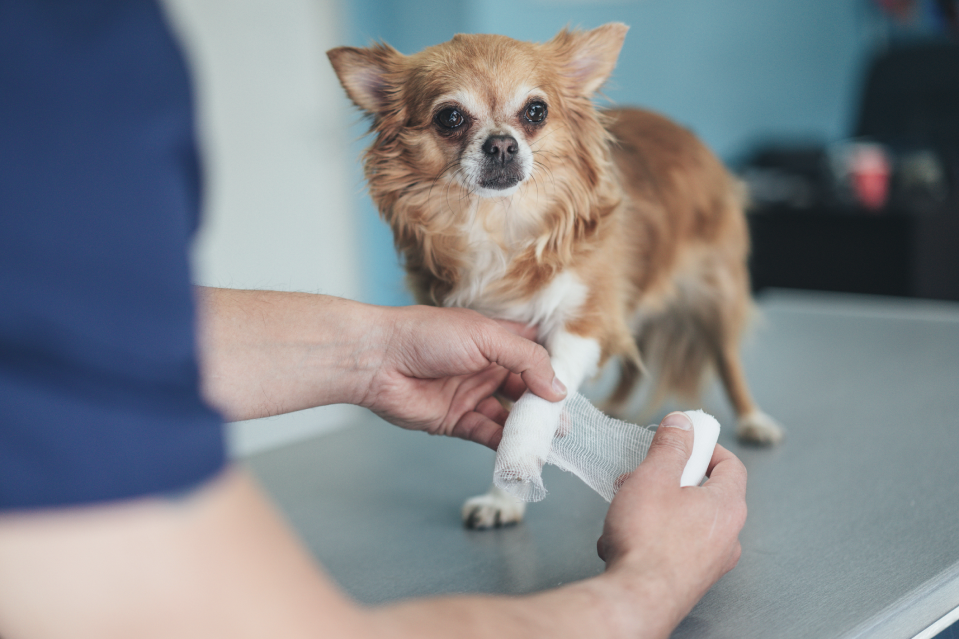
Dog Injuries: Symptoms and Causes
Dogs can be prone to various injuries, from minor scrapes to more severe conditions. Understanding the symptoms and causes of common dog injuries helps pet owners detect issues early and provide appropriate care. From dog sprains or paw infections to head or hip injuries, identifying signs of discomfort or abnormal behavior is crucial in keeping your dog healthy and active.
|
Injury |
Symptoms |
Causes |
|
Dog Carpal Pad Injury |
Limping, licking the pad, bleeding |
Cuts, scrapes, or rough surfaces |
|
Swelling, redness, discharge, licking paw |
Bacterial or fungal infection, foreign object |
|
|
Limping, cracked or torn pad, bleeding |
Rough terrain, excessive walking |
|
|
Dog Eye Infection |
Redness, discharge, squinting |
Bacteria, allergies, or foreign objects |
|
Redness, cloudiness, discharge, blinking |
Infections, trauma, or genetic conditions |
|
|
Dog Nail Injury |
Bleeding, limping, licking the nail |
Broken or torn nail, rough terrain |
|
Dog Tail Injury |
Swelling, drooping tail, bleeding |
Trauma, wagging against hard surfaces |
|
Dog Eye Injury |
Swelling, excessive tearing, squinting |
Scratches, foreign objects, blunt trauma |
|
Dog Soft Tissue Injury |
Limping, swelling, reluctance to move |
Strains, sprains, or overexertion |
|
Dog Head Injury |
Lethargy, vomiting, disorientation |
Trauma, falls, or collisions |
|
Dog Hip Injuries |
Limping, difficulty standing, whining |
Hip dysplasia, trauma, or arthritis |
|
Dog Paw Injury Between Toes |
Redness, swelling, limping |
Foreign objects, infections |
|
Dog Back Injury |
Stiffness, reluctance to move, whining |
Trauma, degenerative conditions, overexertion |
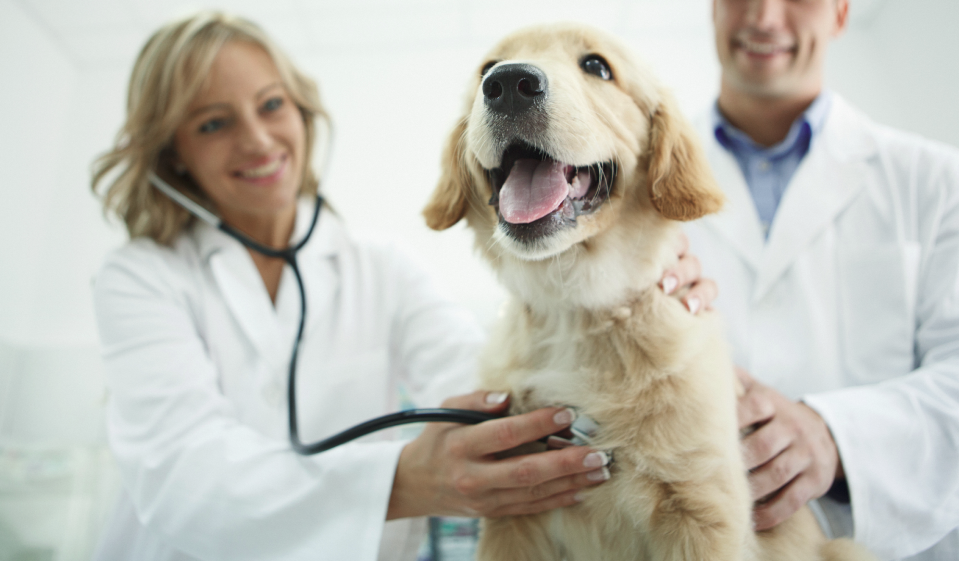
Treatments for Dog Health Issues
Taking care of your dog’s health is crucial to their overall well-being. Below are treatments for common health concerns that every dog owner should be aware of.
Flea and Tick Prevention for Dogs

Fleas and ticks are common parasites that can cause serious health issues for dogs, including skin irritation, infections, and diseases like Lyme disease. Preventing flea and tick infestations is vital for your dog’s health.
Prevention Options:
- Flea Collars: Long-lasting flea collars, such as the Seresto collar, provide up to 8 months of protection.
- Oral Medications: Monthly chewable tablets like NexGard, Bravecto, or Simparica help prevent and kill fleas and ticks.
Treatment Options:
- Topical Treatments: Apply monthly spot-on treatments to the dog's skin to kill fleas and ticks. Popular options include Frontline, Advantage, and Revolution.
- Flea Shampoos: Bathing your dog with medicated flea shampoos can kill fleas instantly and soothe irritated skin.
- Tick Checks: Regularly check your dog for ticks, especially after walks in wooded or grassy areas. Remove ticks with a tick remover or tweezers to prevent disease transmission.
How to Treat a Sprained Dog Leg

A sprain occurs when a dog overstretches or tears a ligament, often leading to your dog limping, as well as swelling and discomfort at the site. Sprains commonly occur after vigorous exercise or accidents.
Treatment Options:
- Rest: Limit your dog's movement and ensure they have a quiet, comfortable place to rest. Avoid strenuous activity for at least a week.
- Cold Compress: Apply a cold compress to the affected leg for 10-15 minutes, several times a day, to reduce swelling and pain.
- Anti-Inflammatory Medications: Non-steroidal anti-inflammatory drugs (NSAIDs) prescribed by your vet can reduce pain and swelling along with pet supplements like TRI-ACTA Vet
- Consultation: If the sprain doesn't improve or worsens, consult a veterinarian to rule out fractures or other underlying issues.
Dog Wound Care

Dogs can get wounds from a variety of causes, including cuts, bites, and scratches. Proper wound care helps prevent infection and promotes faster healing.
Treatment Steps:
- Clean the Wound: Rinse the wound gently with warm water or saline solution to remove dirt and debris. Avoid using hydrogen peroxide or alcohol, as they can damage tissue.
- Antiseptic Application: Apply a pet-safe antiseptic solution, like Betadine or chlorhexidine, to disinfect the wound and prevent infection.
- Bandaging: If the wound is in a place where your dog won’t lick it, let it air-dry. Otherwise, apply a sterile bandage to keep the wound clean and dry. Change the bandage daily or as needed.
- Monitor for Infection: Watch for signs of infection, such as redness, swelling, discharge, or foul odor. If the wound shows signs of infection, consult your veterinarian immediately.
- Vet Care for Deep Wounds: If the wound is deep, bleeding heavily, or won’t close, take your dog to the vet for stitches and further treatment.

Special Dog Care Considerations By Age
As dogs age, their needs change significantly, and providing the right senior dog care is essential for maintaining their quality of life. Below are some key considerations for senior dog care, including recognizing signs of aging, knowing when to switch to senior dog food, and selecting the best food for older dogs.
Signs of an Aging

Dog As your dog enters its senior years, you may start to notice physical and behavioral changes. Common signs of aging dogs include:
- Slower Movement: Older dogs tend to slow down due to arthritis, joint pain, or general muscle stiffness.
- Weight Changes: Seniors may gain weight due to reduced activity or lose weight because of muscle loss or dental problems.
- Greying Fur: Just like humans, dogs may develop grey hairs, especially around the face and muzzle.
- Decreased Hearing or Vision: Some dogs experience reduced hearing or develop cataracts, which can impair their vision.
- Changes in Appetite or Thirst: Your dog's appetite might decrease, or they may drink more water due to age-related health conditions.
- Increased Sleeping: Older dogs tend to sleep more and may have less energy to engage in physical activity.
When to Switch to Senior Dog Food
Knowing when to switch to senior dog food depends on your dog's breed and size, as larger dogs age faster than smaller ones. General guidelines for when a dog is considered a senior are:
- Small Breeds (up to 20 lbs): Around 10-12 years of age.
- Medium Breeds (21-50 lbs): Around 8-10 years of age.
- Large Breeds (51-100 lbs): Around 6-8 years of age.
- Giant Breeds (100+ lbs): As early as 5-6 years of age.
Senior dog food is formulated to meet the changing nutritional needs of older dogs, such as reduced calories to prevent weight gain, joint support, and enhanced digestibility.
Best Senior Dog Food
When selecting senior dog food, it's important to choose a formula that supports your dog’s overall health. Look for:
- Antioxidants: Vitamins C and E support immune health, which is especially important for senior dogs.
- Digestible Ingredients: Senior dogs benefit from easily digestible food that supports gastrointestinal health. Foods with added fiber and probiotics can aid digestion.
- Lower Calories: Older dogs are less active, so they need fewer calories to maintain a healthy weight. Look for senior dog foods with lower calorie content.
It’s also important to give your senior dog a daily joint supplement like TRI-ACTA to support their joint health.
Care Considerations for Puppies

Getting a new puppy is always an exciting time. But with that excitement comes some important responsibilities to ensure they grow into a happy, healthy, well-adjusted dog. The food you choose, exercise, socialization, and veterinary care are all important considerations for your new puppy.
Food Considerations for Puppies
- Typically, puppies need more calories than adult dogs since their small bodies use a ton of energy for growth and play, so puppy food has higher calories. However, it’s important not to overfeed large or giant breed puppies or give them food high in fat. Excess weight can put undue stress on their developing bones and joints, which aren't yet mature enough to handle the added strain.
- Puppy food should contain at least a 1.1:1 and 1.4:1 ratio of calcium to phosphorus to support healthy bones and joints.
- Include vitamins and minerals that promote skeletal growth. Vitamin D, A, Copper, Zinc, and Manganese are vital for strong bones and teeth, and they must be precisely balanced to ensure bone health. If your dog's food already has these nutrients, avoid adding extra supplements.
- Ensure a minimum of 22% high-quality protein and 8% fat. The protein and fat content should be clearly indicated on the dog food packaging. Generally, animal protein sources are preferable over vegetable or plant-based ones.
- We recommend TRI-ACTA Regular Strength for young dogs, including puppies. The benefit being that it supports the proper growth and maturation during puppyhood and can have preventive value later in life. When giving it to a puppy or young dog, half the recommend serving is all that is required.
Exercise Considerations
Exercise is crucial for puppy development but should be done carefully, especially for large breeds. Avoid strenuous activities like running or jumping to prevent injury to their growing bones and joints. Stick to gentle play and walks until they’re fully grown.
Socialization and Training
Early socialization helps puppies grow into confident, well-adjusted adults. Expose them to various environments, people, and animals. Begin training early, focusing on basic commands with positive reinforcement to build a strong behavioral foundation.
Veterinary Care
Regular vet checkups during the first year are essential. Follow vaccination schedules for diseases like parvovirus, distemper, and rabies. Discuss flea prevention, deworming, and spaying/neutering with your vet to support your puppy's long-term health.
TRI-ACTA for Pets
A proactive approach for developing and younger adult pets to maintain optimal joint health mobility, minimize inflammation and fend off age-related ailments.

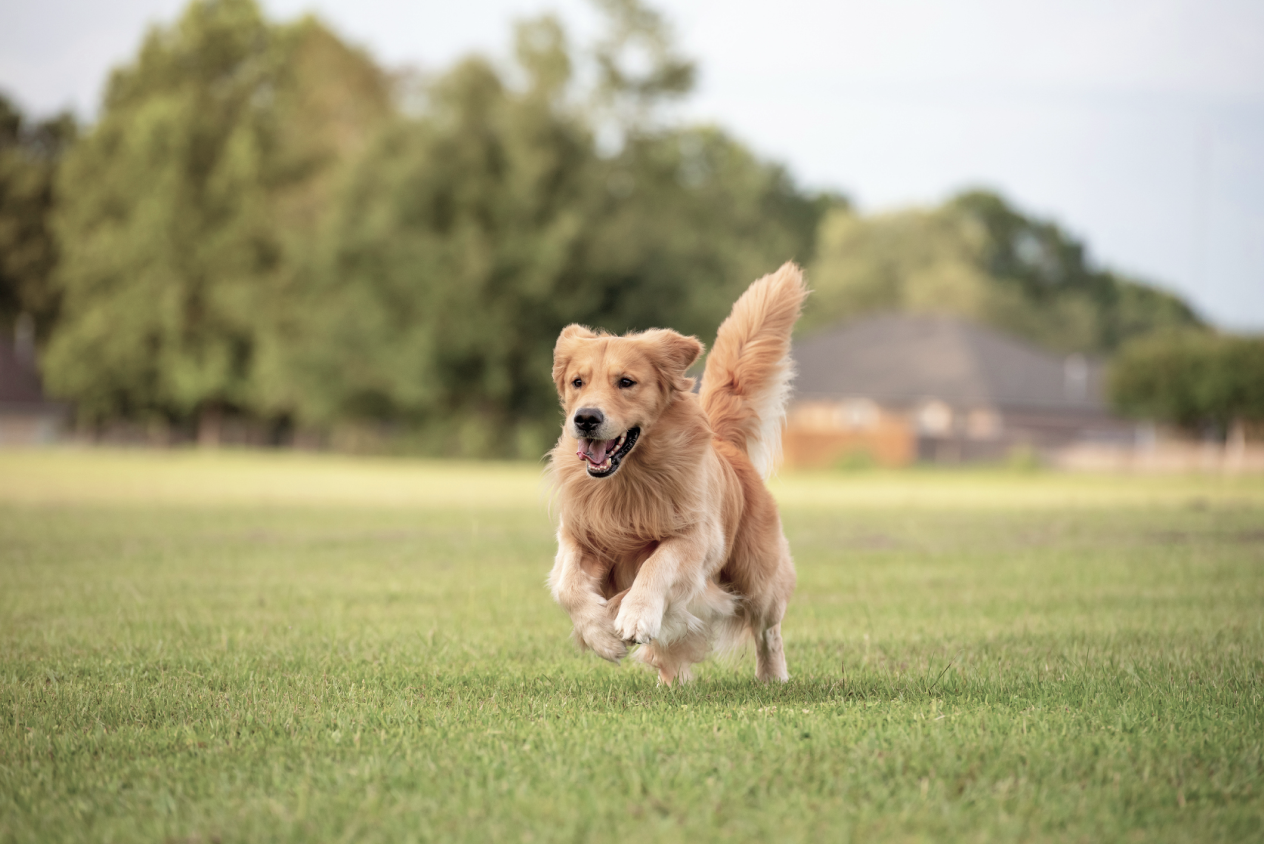
Conclusion
Caring for a dog involves dedication, but the rewards are immense. By focusing on a balanced routine of exercise, nutrition, grooming, and preventive healthcare, you’ll give your dog the best chance at a long, healthy life. Whether it’s picking the right vet or staying on top of vaccinations and dental care, each small effort contributes to your dog's overall happiness and well-being. With the right care, your furry friend will be by your side, happy and healthy for years to come.
TRI-ACTA for Pets
A proactive approach for developing and younger adult pets to maintain optimal joint health mobility, minimize inflammation and fend off age-related ailments.


